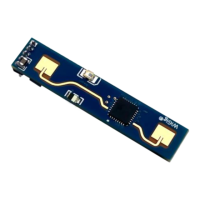
Do you have a question about the Hi-Link HLK-LD2410B and is the answer not in the manual?
| Operating Frequency | 24 GHz |
|---|---|
| Supply Voltage | 5 V DC |
| Modulation Mode | FMCW |
| Output Signal | Digital |
| Current Consumption | 60 mA |
| Output Interface | UART |
| Operating Temperature | -40℃ ~ 85℃ |
| Detection Range | 0.2 - 6 m |
